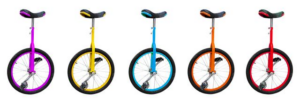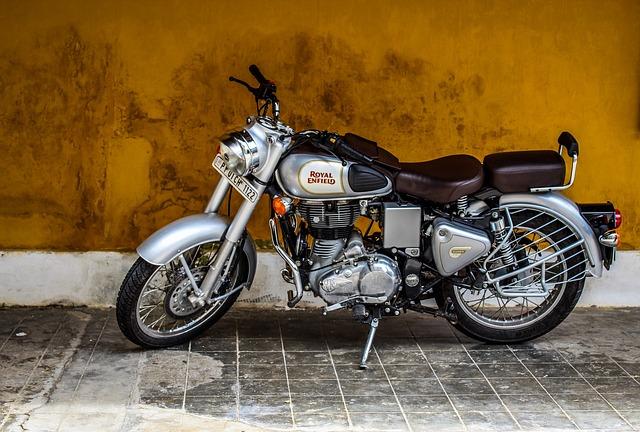In the fast-evolving world of cycling, efficiency and precision are paramount. Central to this pursuit are derailleurs – the intricate components responsible for seamless gear shifting. The age-old adage, “All is fair in love and war,” finds a contemporary twist in the biking realm with the maxim, “All is faired in bikes and derailleurs.” As manufacturers and riders alike seek every advantage, advancements in fairing and aerodynamic design are transforming how derailleurs perform under pressure. This article delves into the latest innovations, competitive dynamics, and regulatory debates shaping the cutting edge of drivetrain technology.
Understanding the Importance of Fairing in Bike Performance
In the realm of cycling, every millisecond counts, and aerodynamic efficiency plays a crucial role in elevating bike performance. By implementing advanced fairing techniques, cyclists reduce drag, enabling smoother airflow around bicycles, especially near the drivetrain and derailleurs. These modifications not only enhance speed but also improve energy conservation over long distances. Fairings act as a shield, minimizing wind resistance caused by exposed components, which is particularly critical during competitive racing or high-intensity rides.
Key benefits of incorporating fairing elements include:
- Reduced aerodynamic drag for higher top speeds
- Improved pedal efficiency, reducing rider fatigue
- Protection of delicate parts from debris and weather
- Optimized airflow management around drivetrain components
Consider the following comparative data on the impact of fairings on drag force:
| Component | Drag Force (without fairing) | Drag Force (with fairing) | Reduction (%) |
|---|---|---|---|
| Rear Derailleur | 1.2 N | 0.7 N | 41.7% |
| Chain Guide | 0.9 N | 0.5 N | 44.4% |
| Crankset Guard | 1.5 N | 0.8 N | 46.7% |
How Derailleur Design Influences Shifting Efficiency and Rider Experience
Modern derailleur designs prioritize not only mechanical precision but also aerodynamic efficiency, which is pivotal in enhancing overall shifting performance and rider comfort. Lightweight materials, such as carbon composites and aluminum alloys, reduce inertia, allowing for smoother and quicker gear changes. Innovations in pulley cage geometry and the positioning of the derailleurs relative to the cassette further minimize friction and chain drag, ensuring crisp and reliable shifting under diverse riding conditions. These refinements collectively reduce the physical effort required from the rider, especially during intense sprints or steep climbs.
Beyond raw mechanics, ergonomic factors embedded in derailleur design significantly affect the rider’s experience. Compact, low-profile shapes reduce the risk of snagging on obstacles and improve the bike’s clearance, which is a crucial advantage for off-road cyclists. Additionally, the integration of advanced clutch mechanisms stabilizes the chain, reducing noise and chain drops on rough terrain. Key aspects of derailleur impact on shifting and rider satisfaction include:
- Precision indexing: Enhances gear alignment for seamless transitions.
- Material innovation: Balances durability with weight savings.
- Clutch technology: Maintains chain tension, avoiding slips.
- Aerodynamic sculpting: Cuts drag to optimize speed.
| Feature | Impact on Shifting | Rider Benefit |
|---|---|---|
| Short Cage Design | Faster response, less chain slack | Enhanced control in rapid gear changes |
| Sealed Bearings | Reduced friction, increased durability | Smoother shifting under adverse conditions |
| Pivot Placement | Optimized chain line alignment | Consistent shifting with minimal effort |
Expert Tips for Maintaining and Upgrading Your Bike’s Fairing and Derailleur Systems
Keeping your bike’s fairing in prime condition not only enhances aerodynamics but also protects vital components from debris and weather. Regular washing with mild soap and water, combined with a gentle wipe-down using microfiber cloths, ensures the finish stays sleek and scratch-free. For minor cracks or loose edges, using a barrier tape or a specialized adhesive can prevent further damage until professional repair. Pay special attention to mounting points and fasteners, as vibrations during rides can loosen them over time, compromising both safety and performance.
Upgrading your derailleur system can significantly improve gear shifting precision and overall ride quality. When considering an upgrade, focus on compatibility with your bike’s drivetrain and the type of riding you do. High-end derailleurs offer lighter materials, more refined tension springs, and adjustable limit screws for a custom fit. Below is a quick guide to derailleur features worth evaluating:
| Feature | Benefit | Recommended For |
|---|---|---|
| Shadow RD Technology | Low profile design reduces chain slap | Mountain and trail bikes |
| Wide Link Construction | Enhanced stiffness and durability | Road cyclists and racers |
| 11-Speed Compatibility | Wider gear range for versatility | Long-distance and touring riders |
The Way Forward
In the ever-evolving world of cycling, the adage “All Is Faired In Bikes And Derailleurs” underscores the crucial role of aerodynamic design in boosting performance. As manufacturers continue to innovate with sleek fairings and precision-engineered derailleurs, riders benefit from smoother shifts and reduced drag, redefining speed and efficiency on two wheels. Whether for competitive racers or everyday enthusiasts, these advancements signal a new era where technology and design work hand in hand to elevate the cycling experience. Staying attuned to these developments will be essential for anyone looking to keep pace with the future of the sport.











